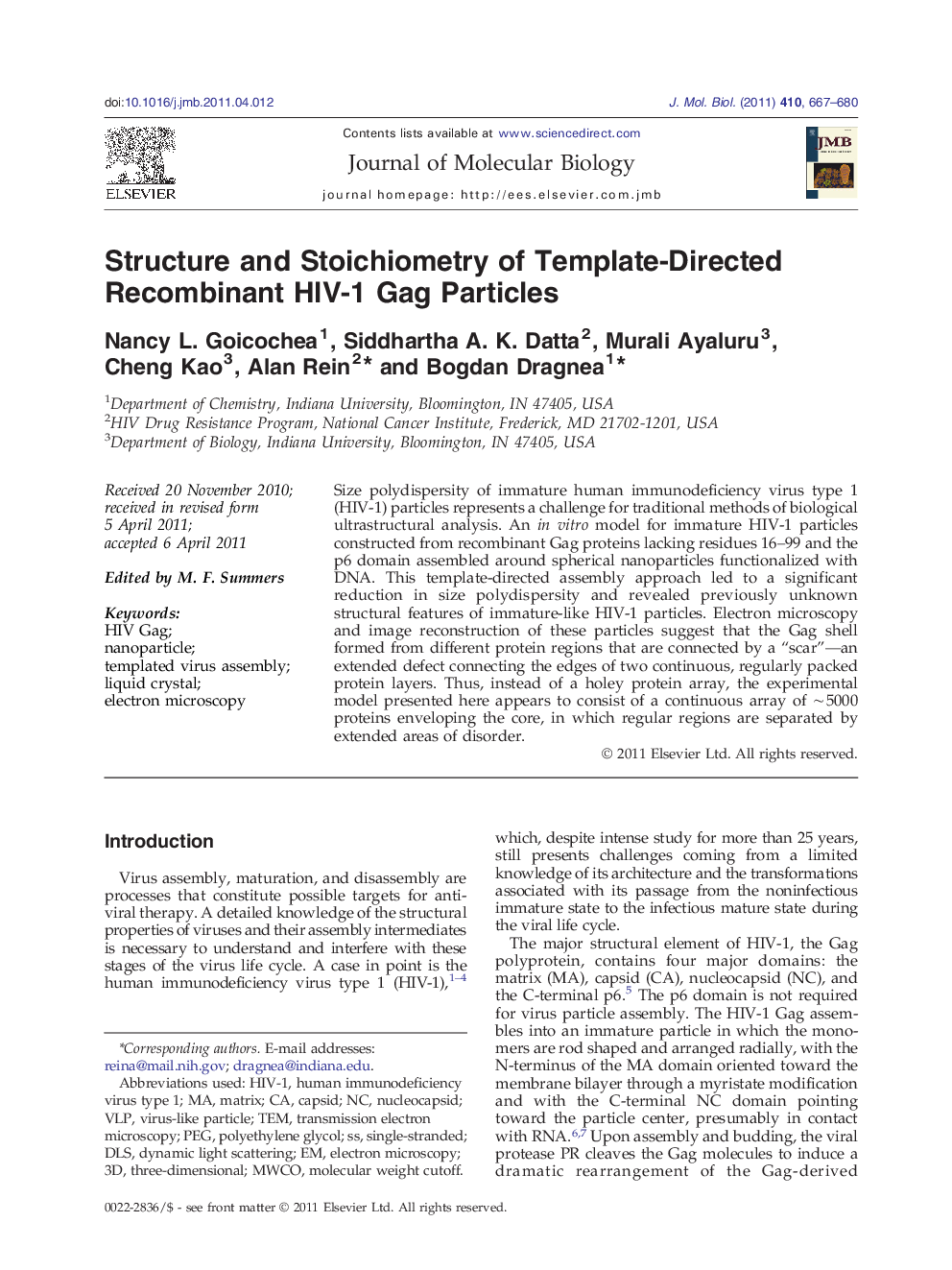| Article ID | Journal | Published Year | Pages | File Type |
|---|---|---|---|---|
| 2185114 | Journal of Molecular Biology | 2011 | 14 Pages |
Size polydispersity of immature human immunodeficiency virus type 1 (HIV-1) particles represents a challenge for traditional methods of biological ultrastructural analysis. An in vitro model for immature HIV-1 particles constructed from recombinant Gag proteins lacking residues 16–99 and the p6 domain assembled around spherical nanoparticles functionalized with DNA. This template-directed assembly approach led to a significant reduction in size polydispersity and revealed previously unknown structural features of immature-like HIV-1 particles. Electron microscopy and image reconstruction of these particles suggest that the Gag shell formed from different protein regions that are connected by a “scar”—an extended defect connecting the edges of two continuous, regularly packed protein layers. Thus, instead of a holey protein array, the experimental model presented here appears to consist of a continuous array of ∼ 5000 proteins enveloping the core, in which regular regions are separated by extended areas of disorder.
Graphical AbstractFigure optionsDownload full-size imageDownload high-quality image (53 K)Download as PowerPoint slideResearch Highlights► Retrovirus particles are roughly spherical but are polydisperse and lack symmetry. ► We assembled particles from HIV-1 Gag protein using gold nanoparticle templates. ► Assembly on 60-nm templates sharply reduced the polydispersity of the particles. ► The protein seems to fully cover the particles, but with a “scar” in the lattice. ► The scar may reflect the difficulty of packing rod-shaped subunits on a sphere.
